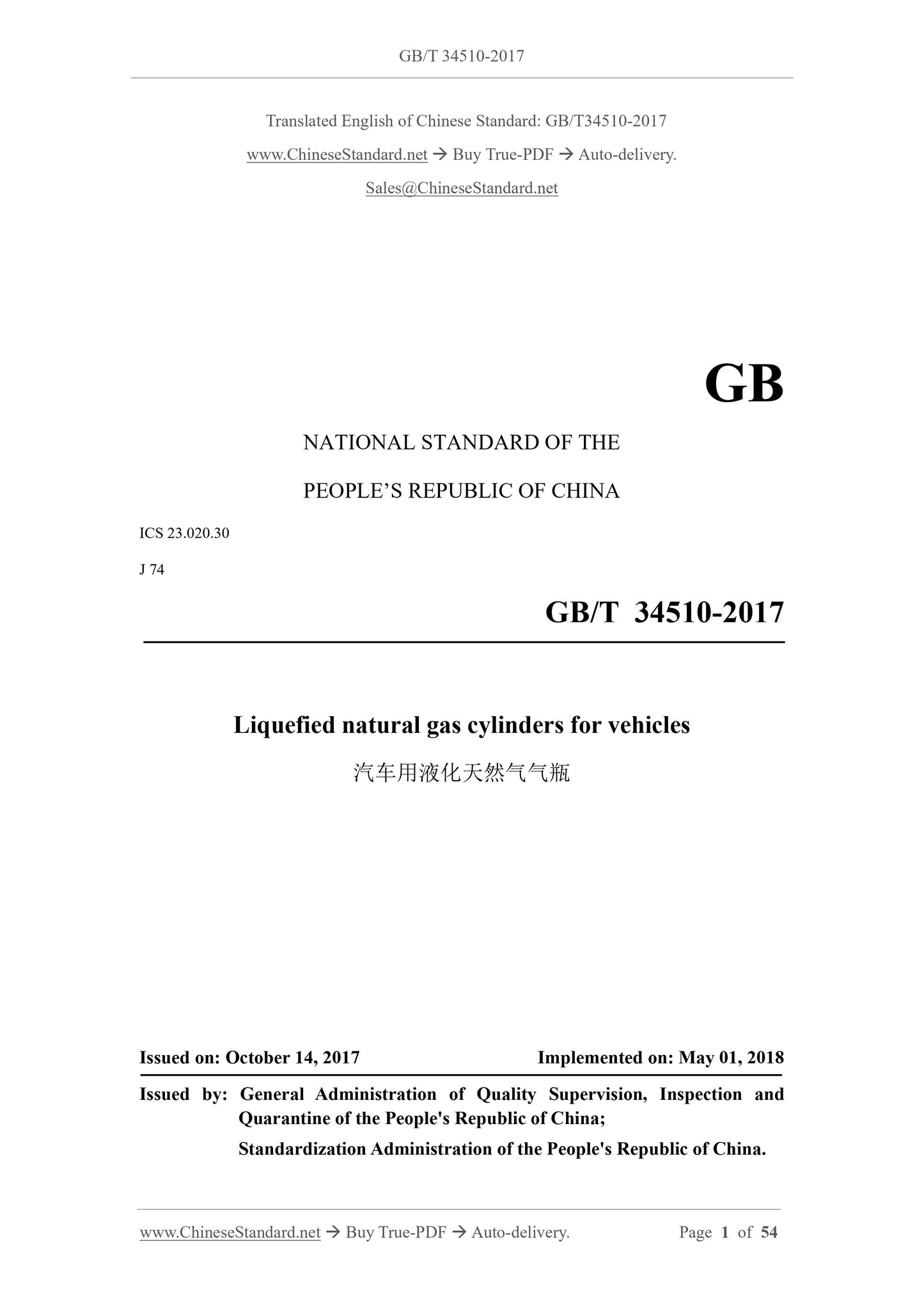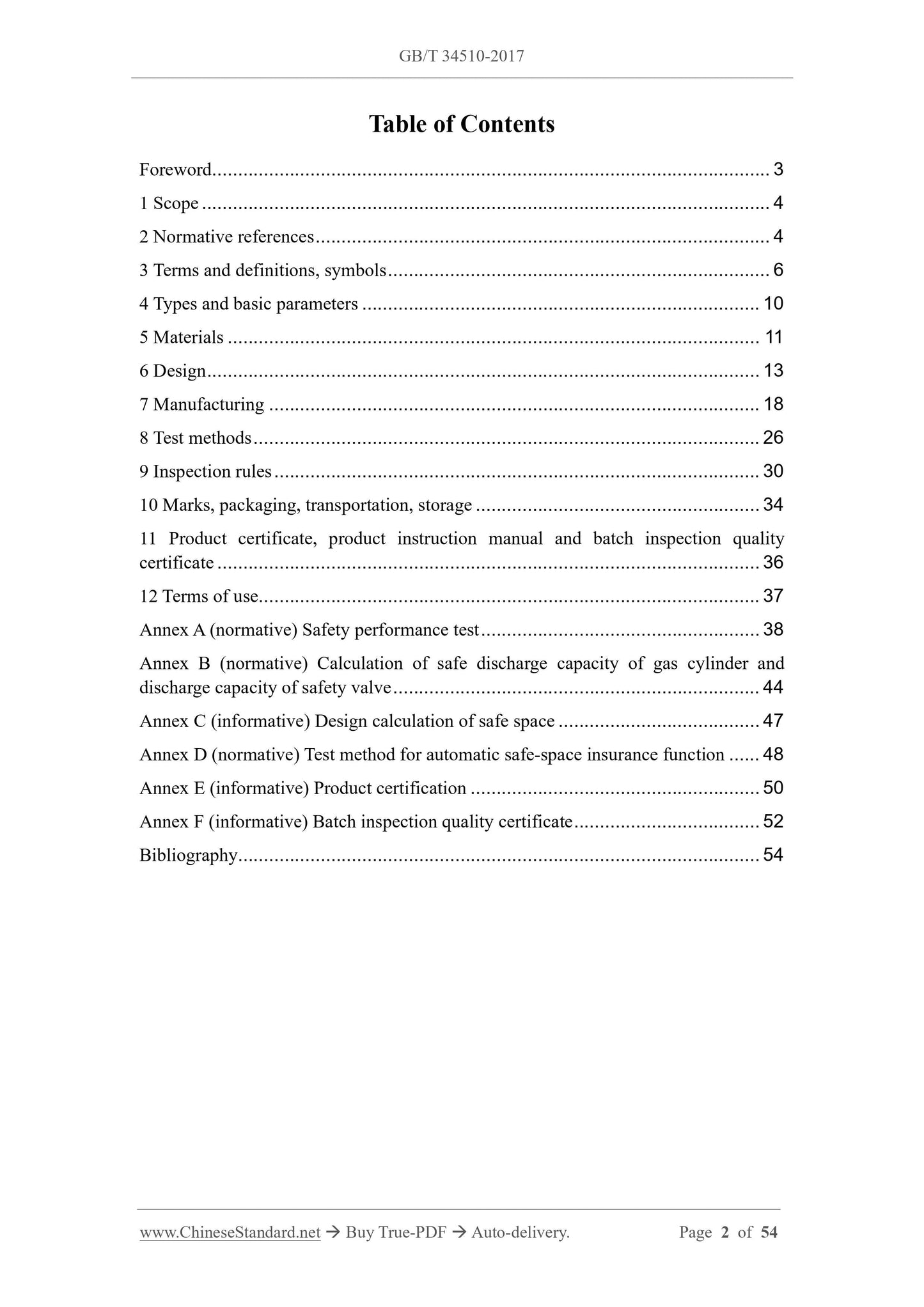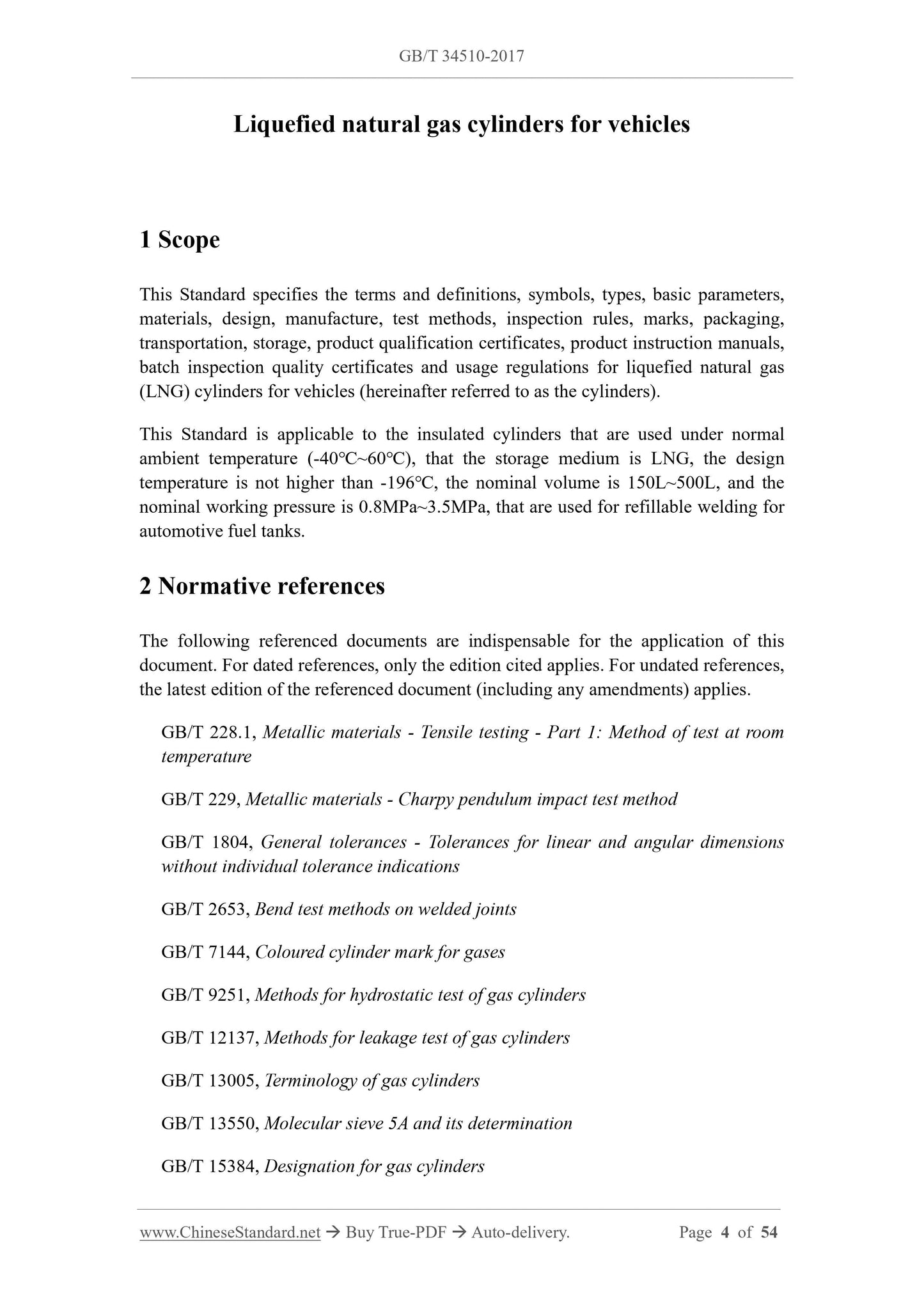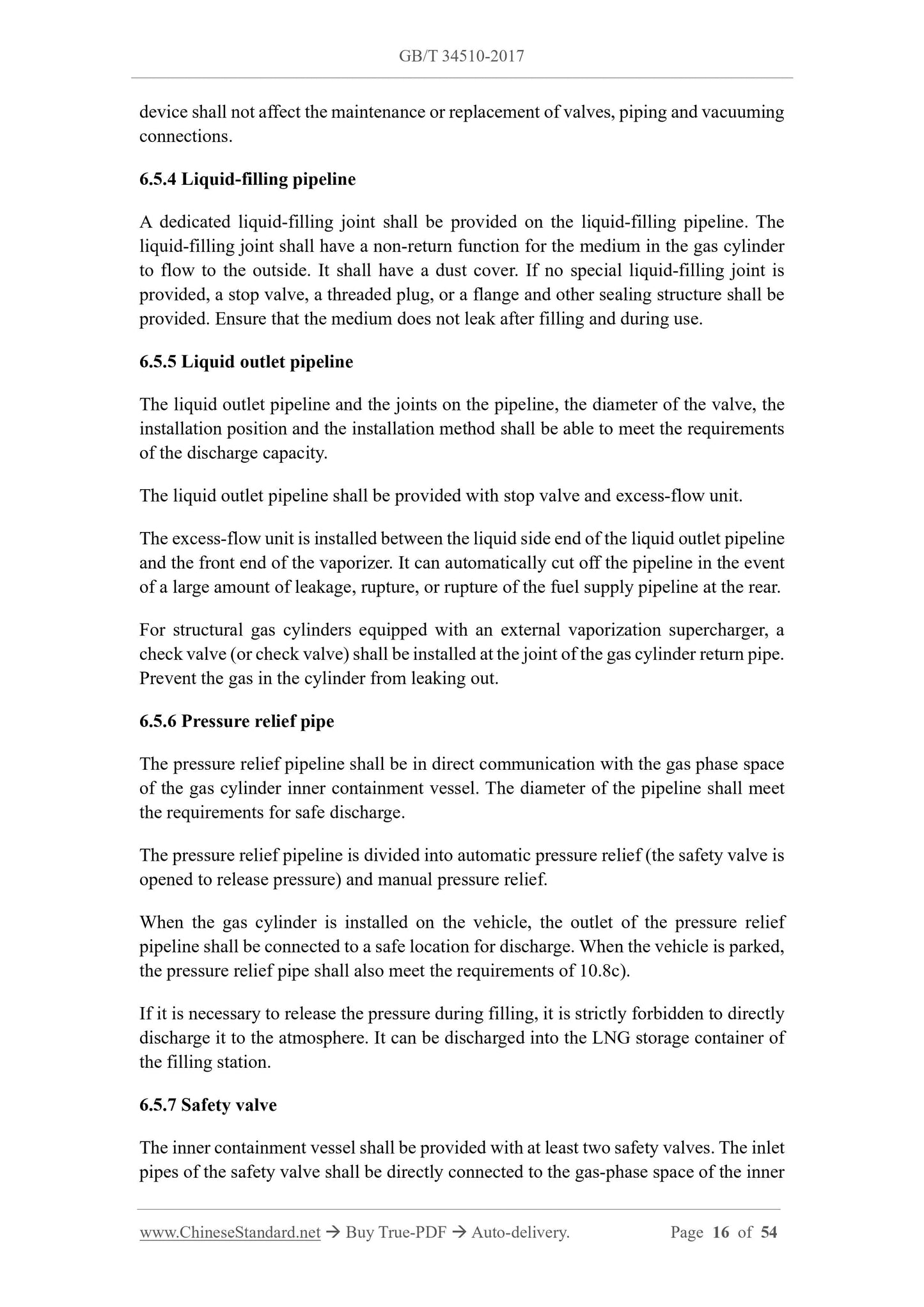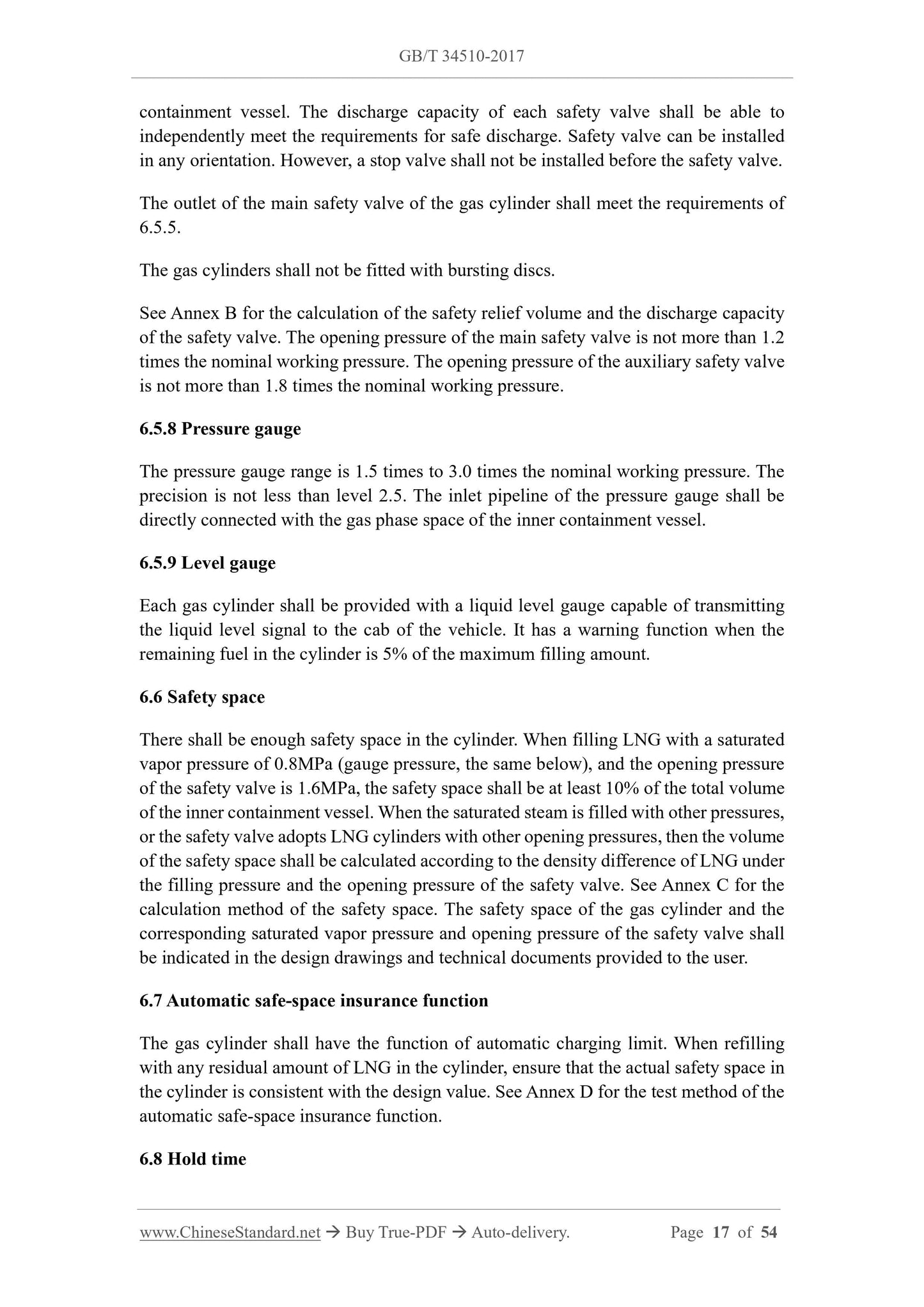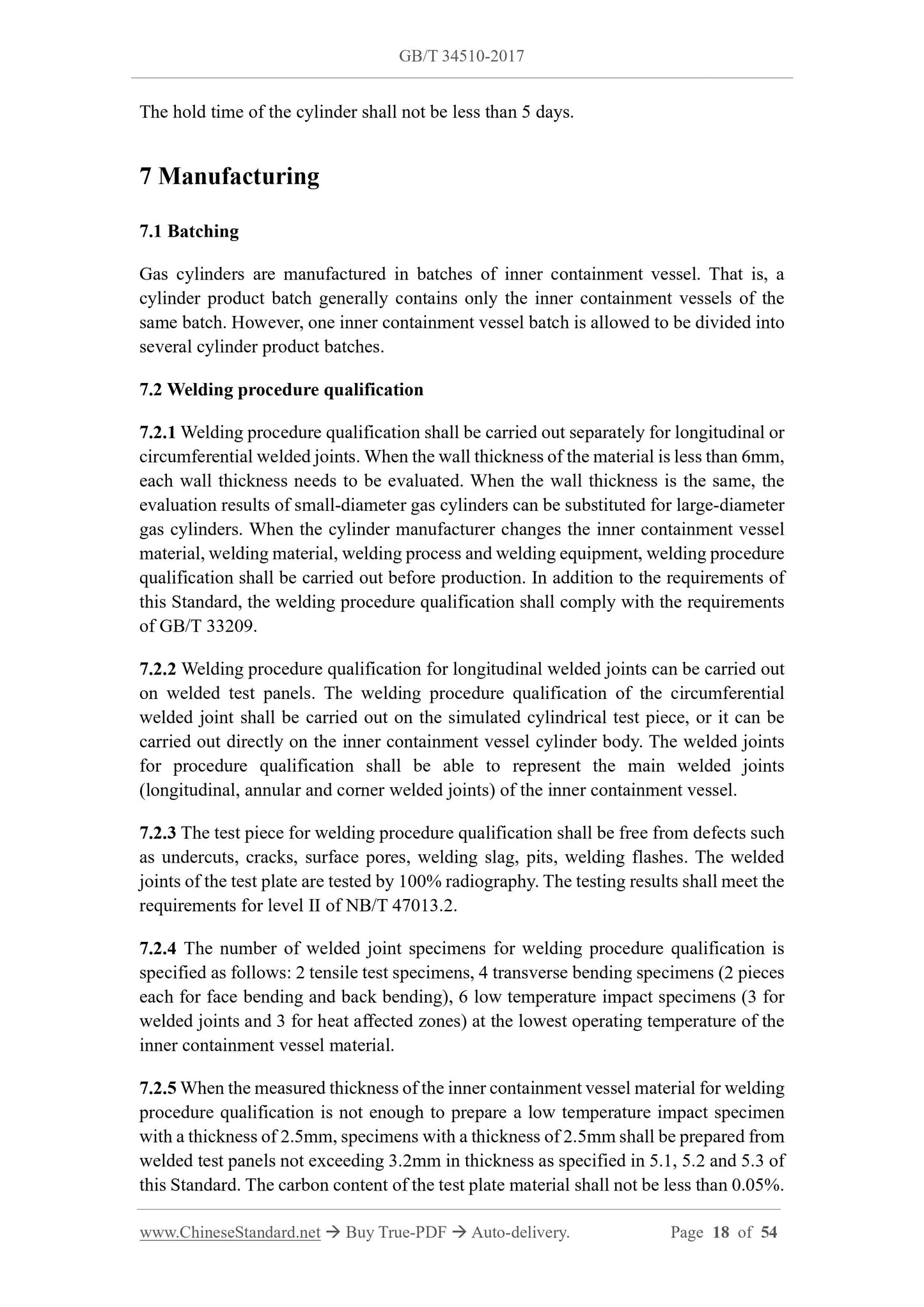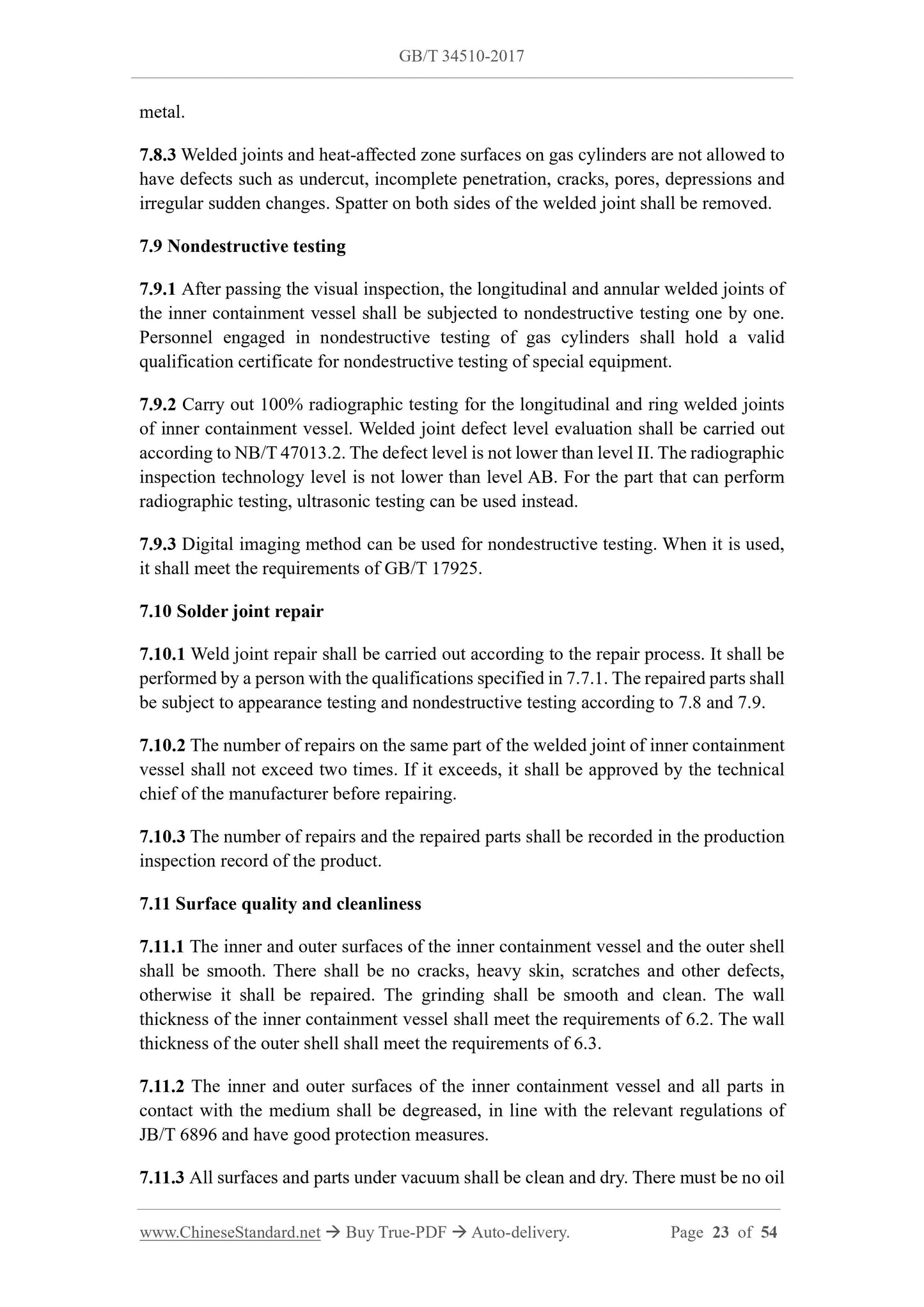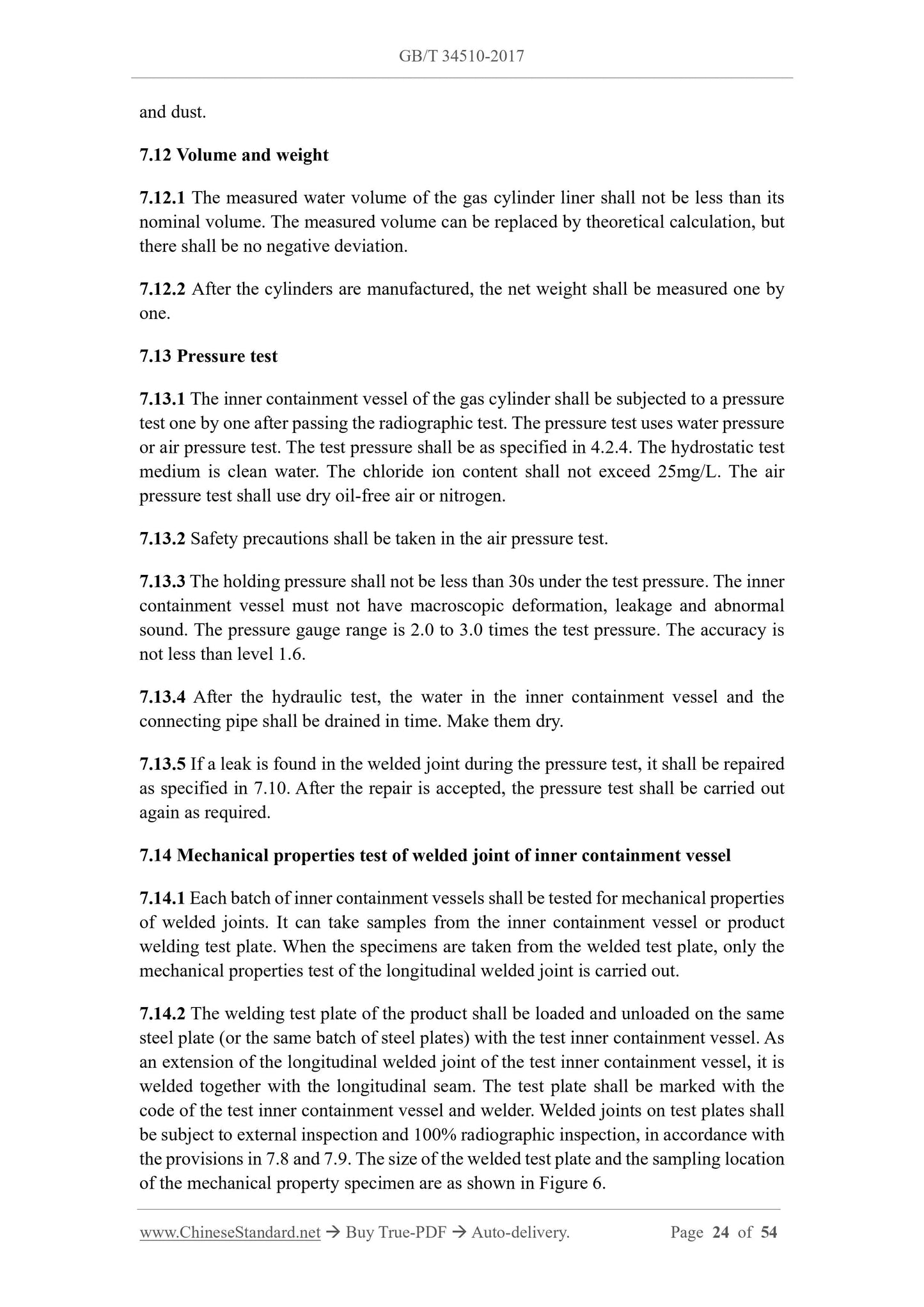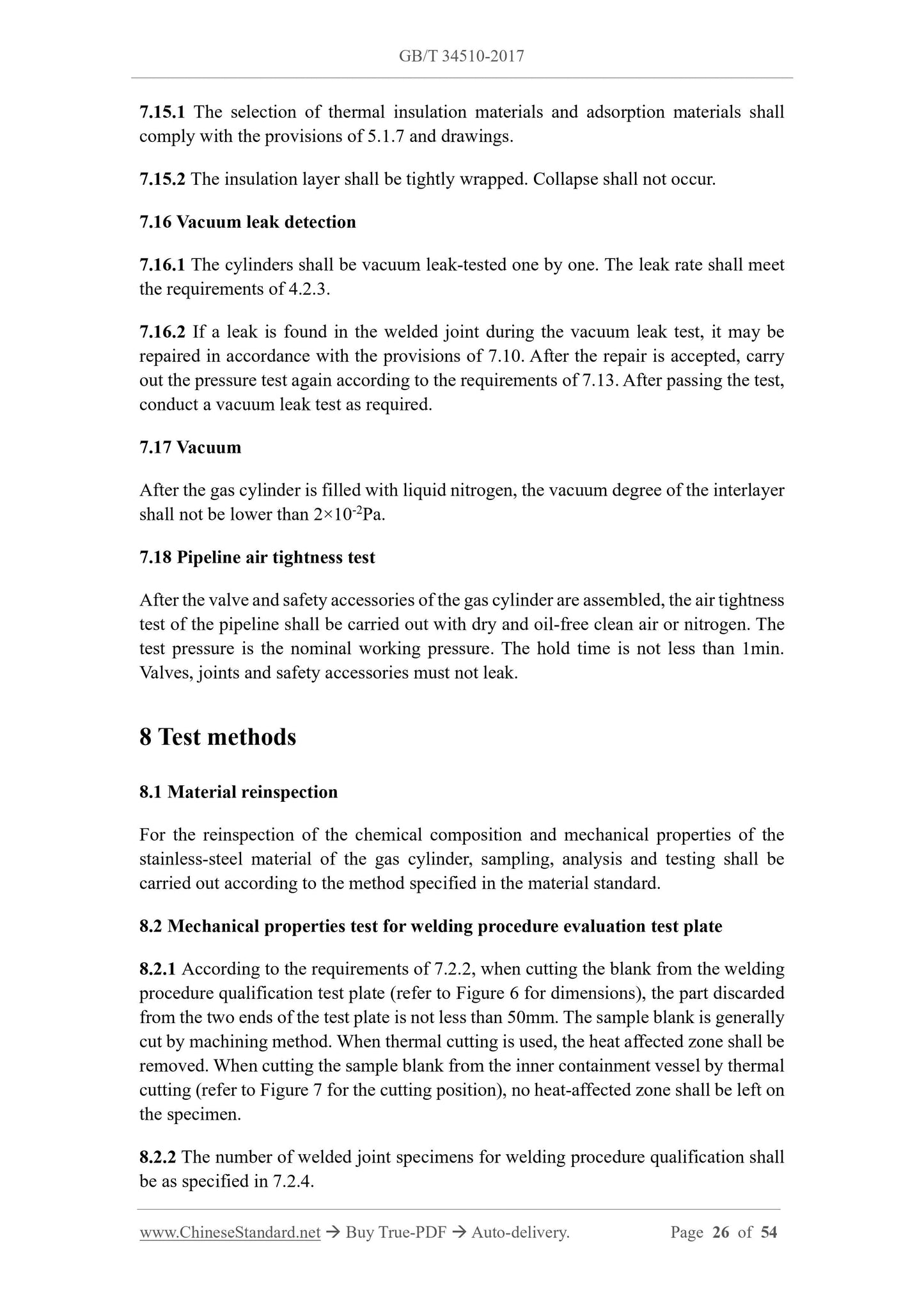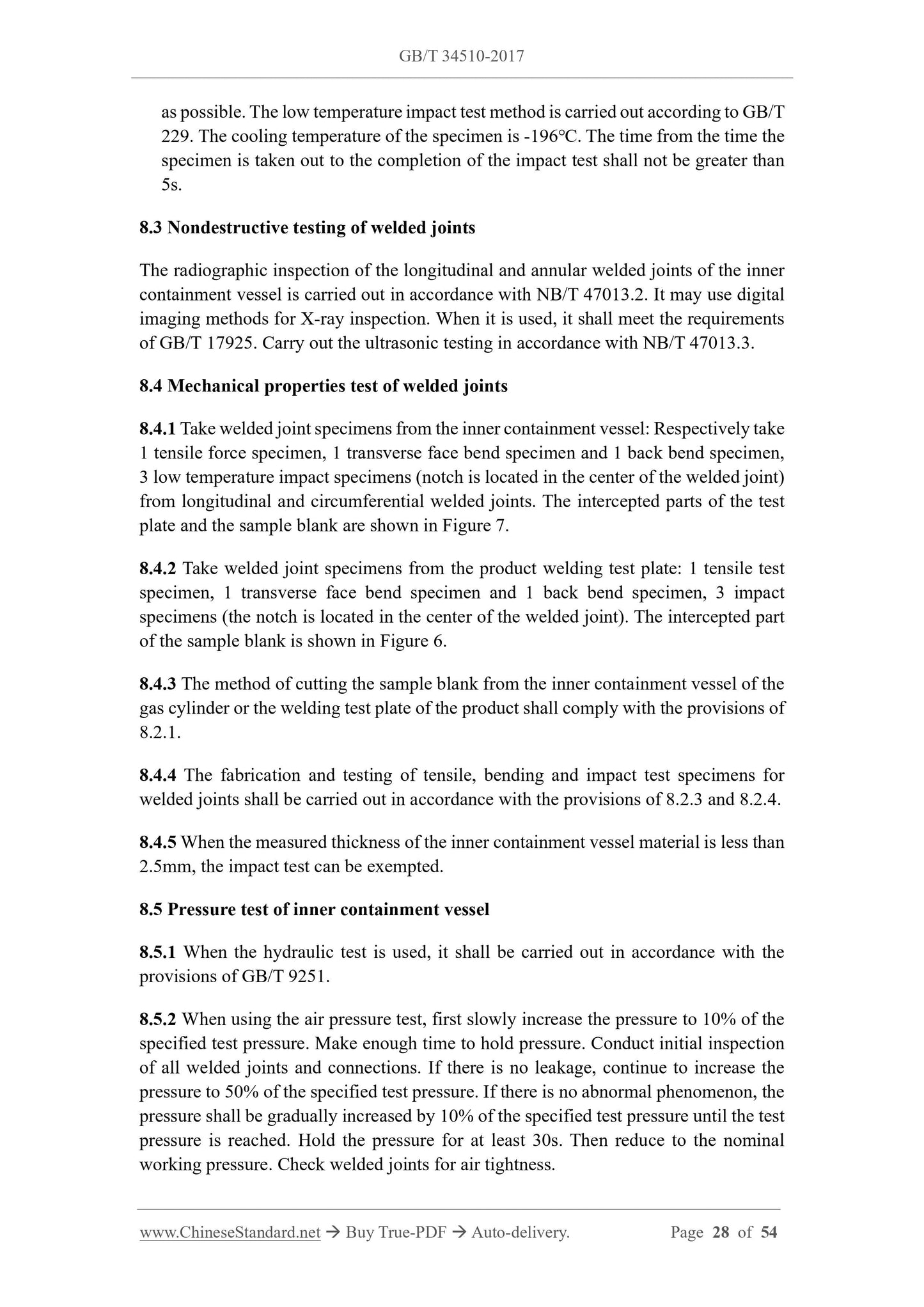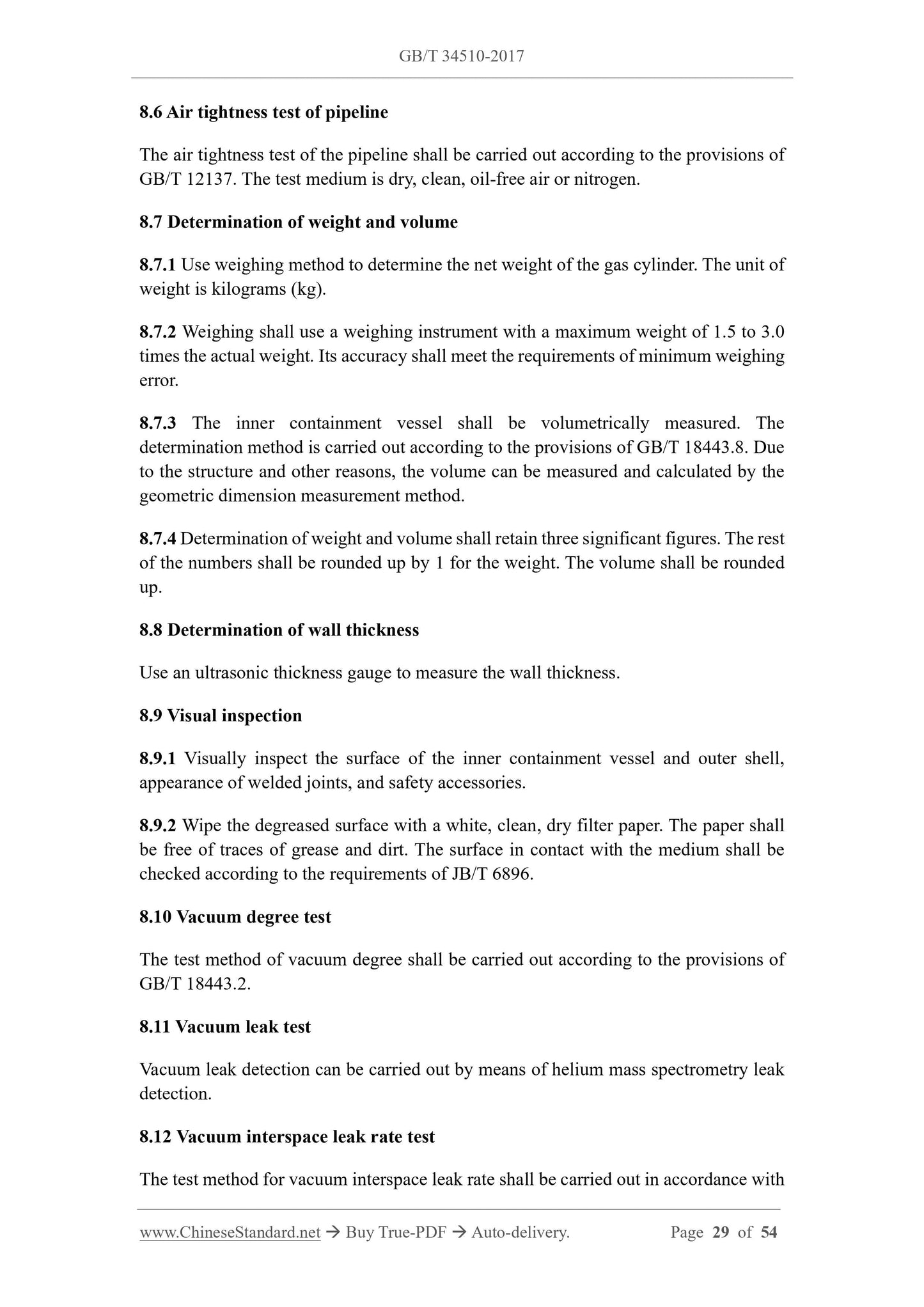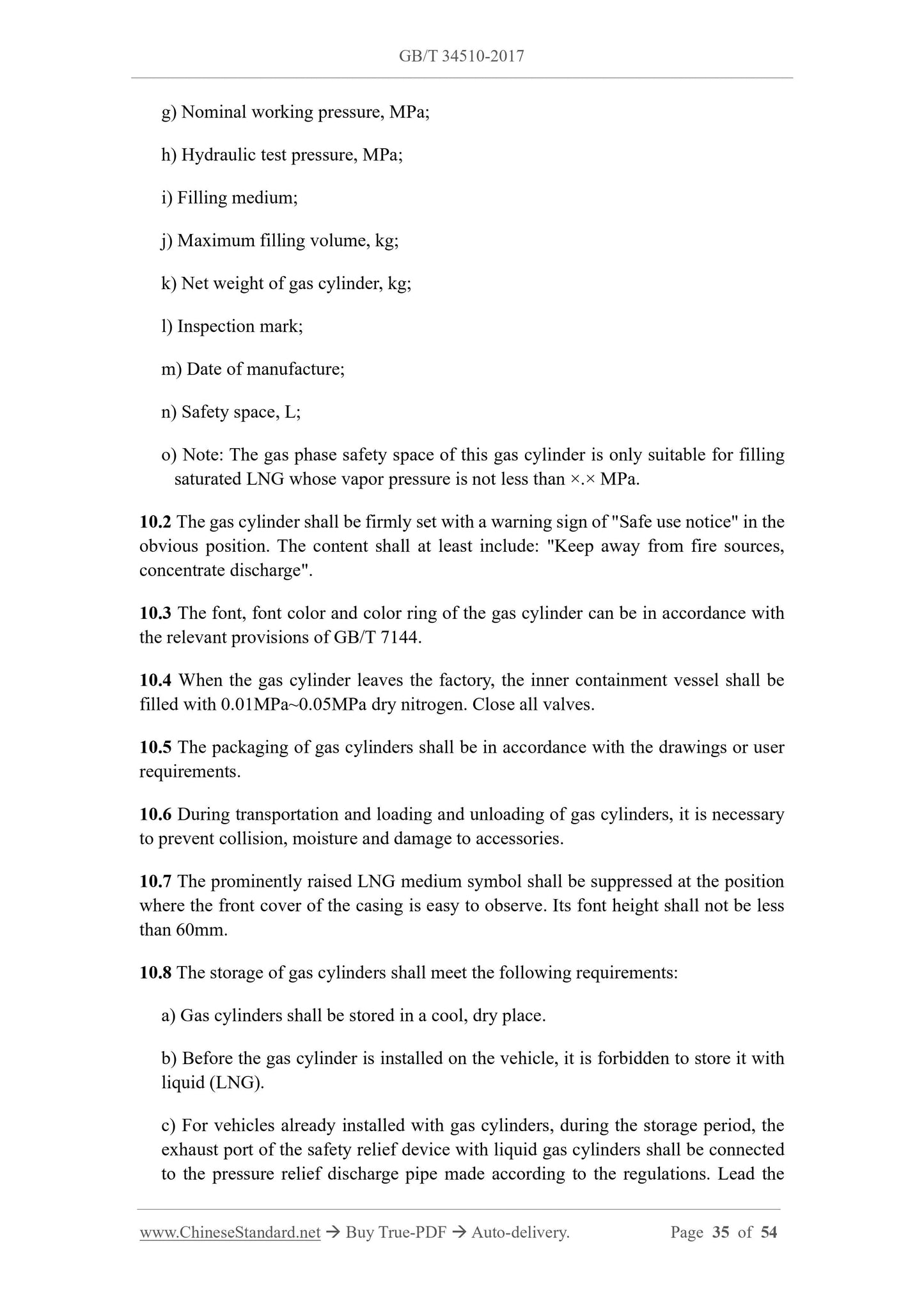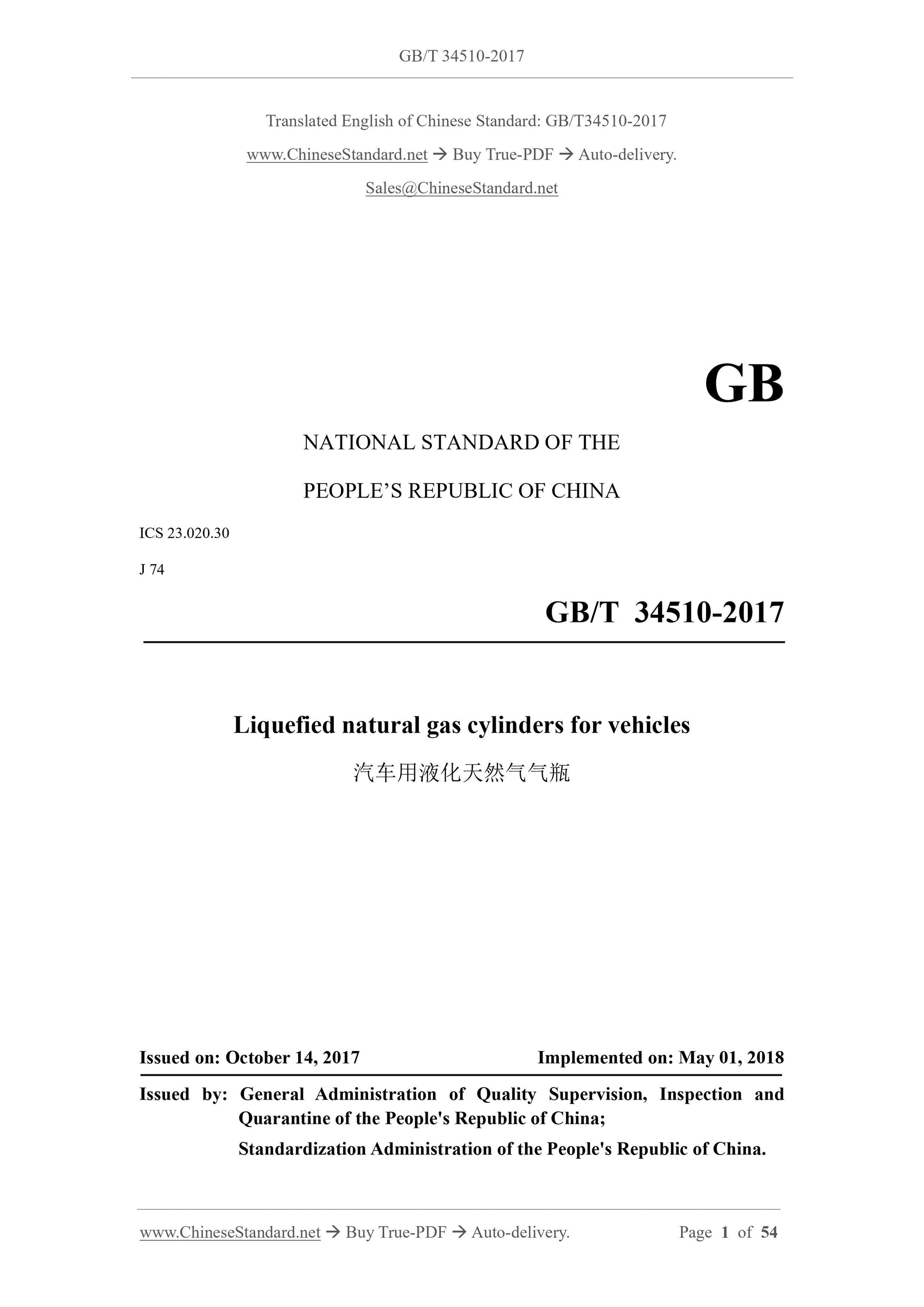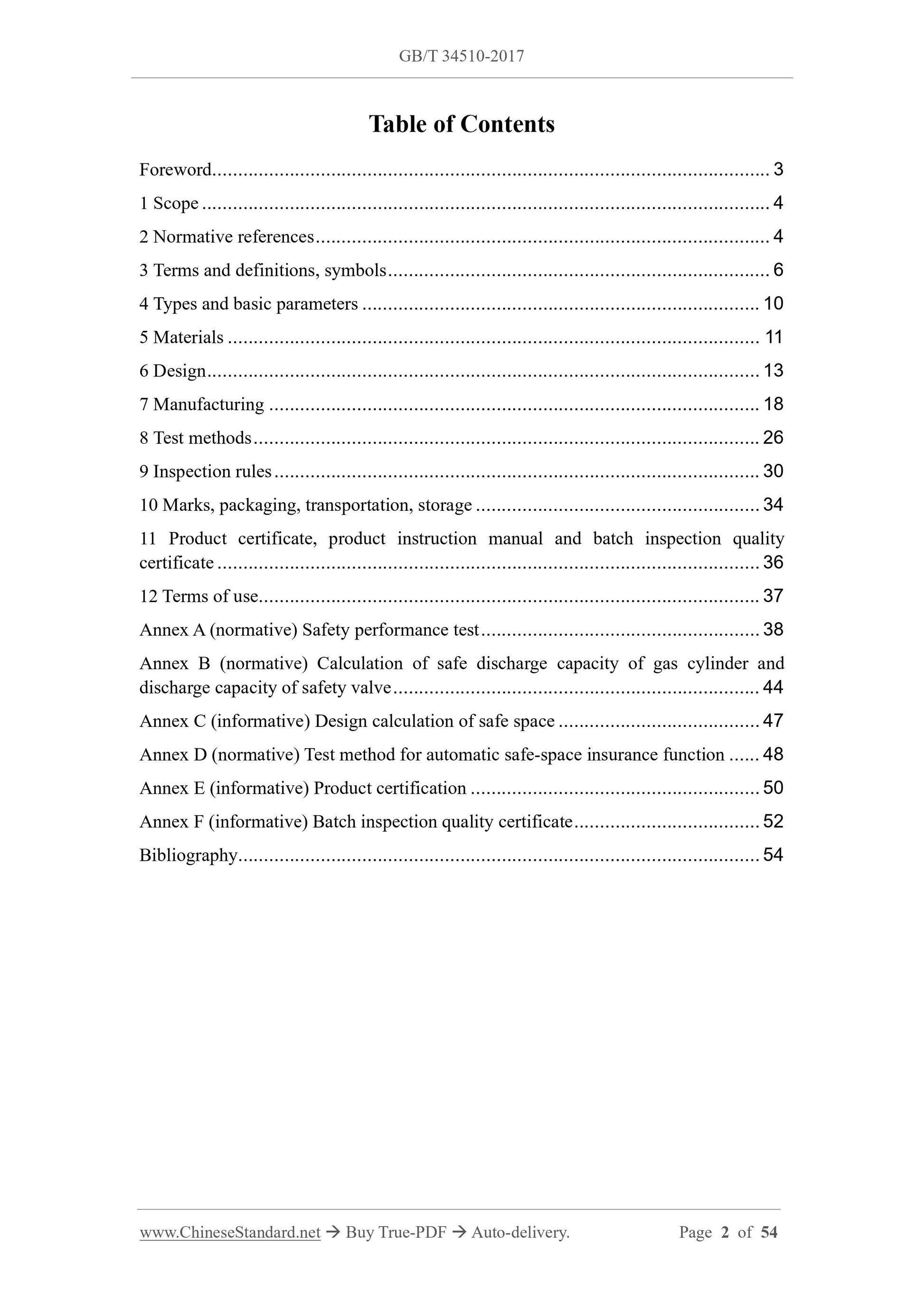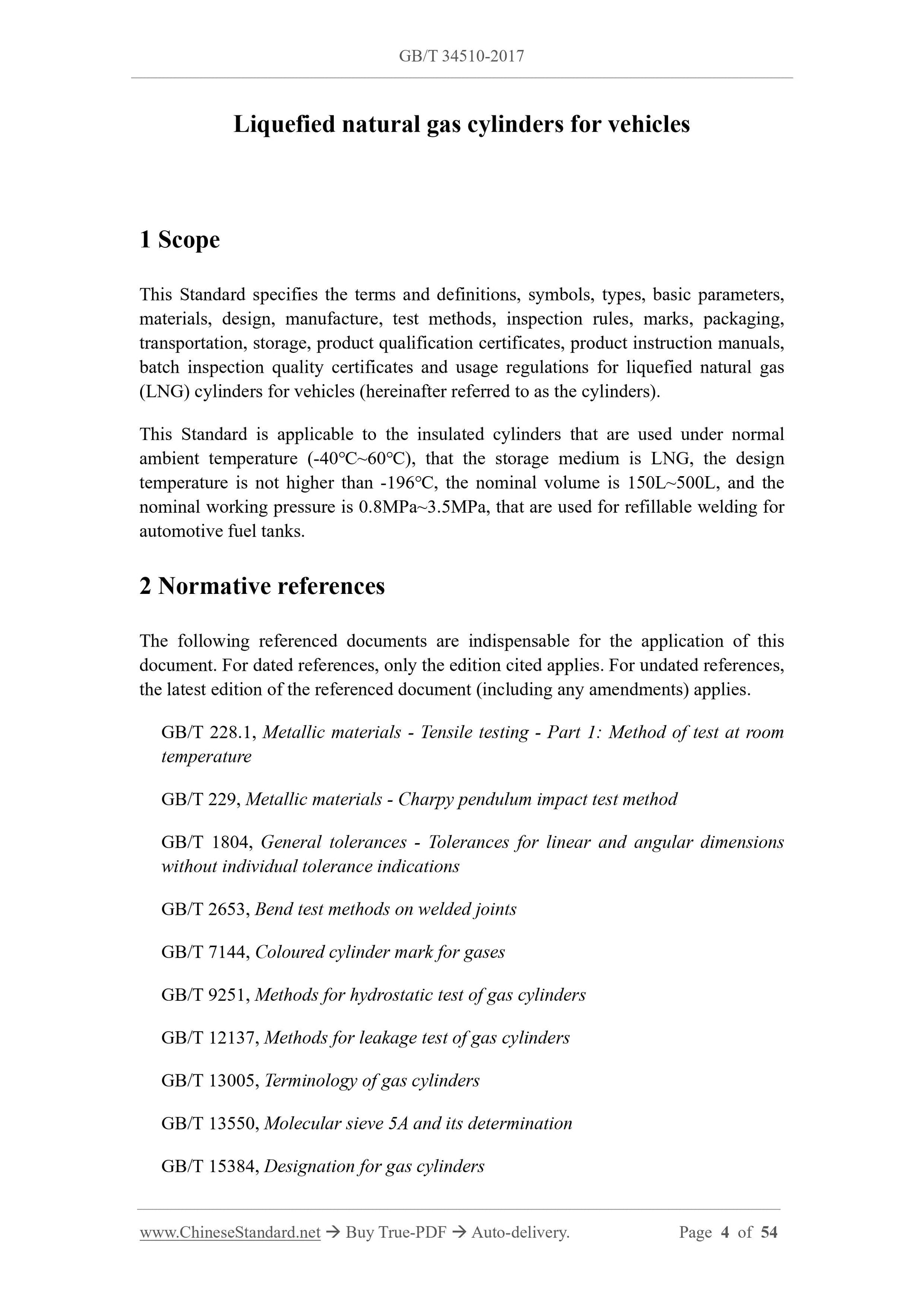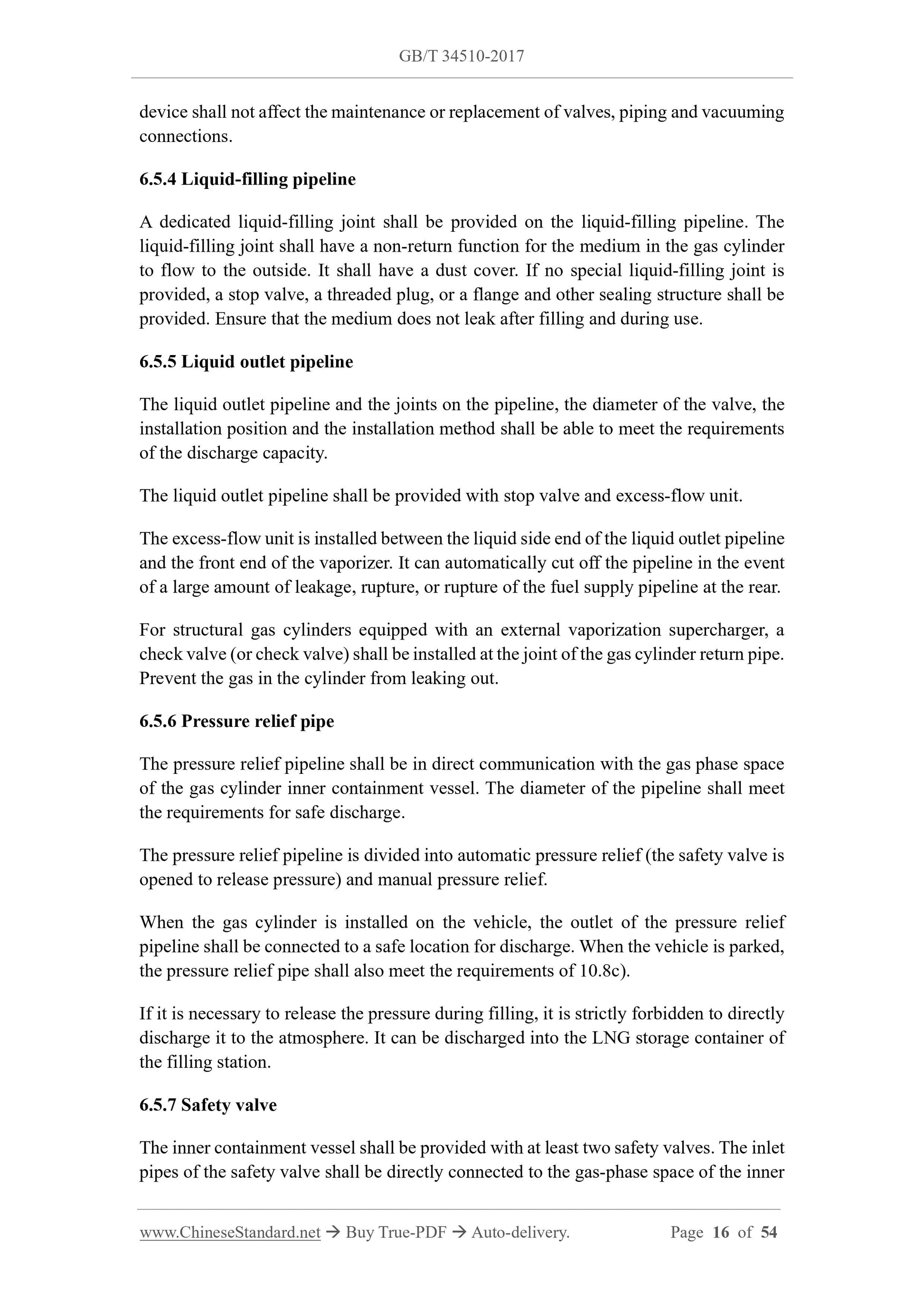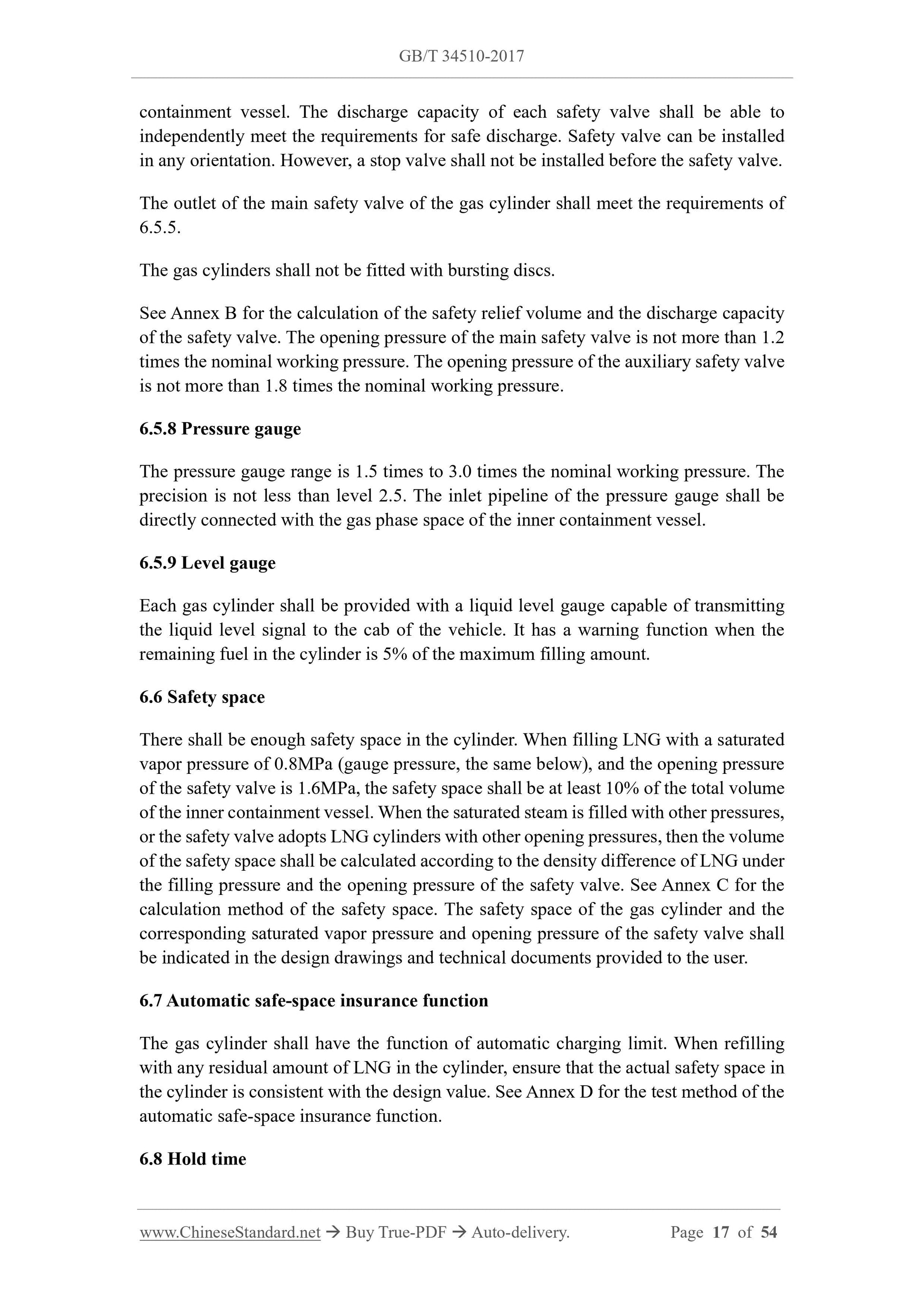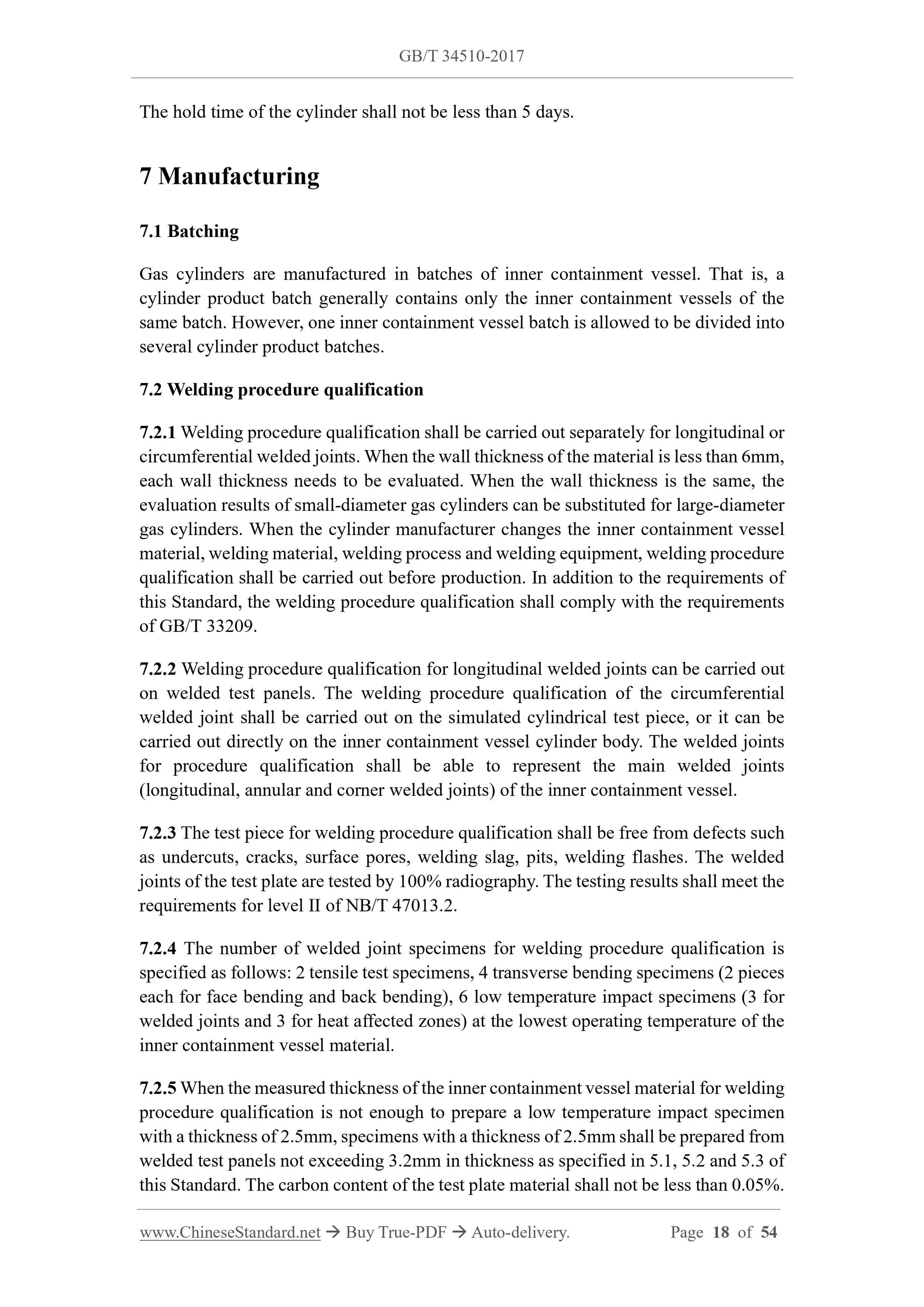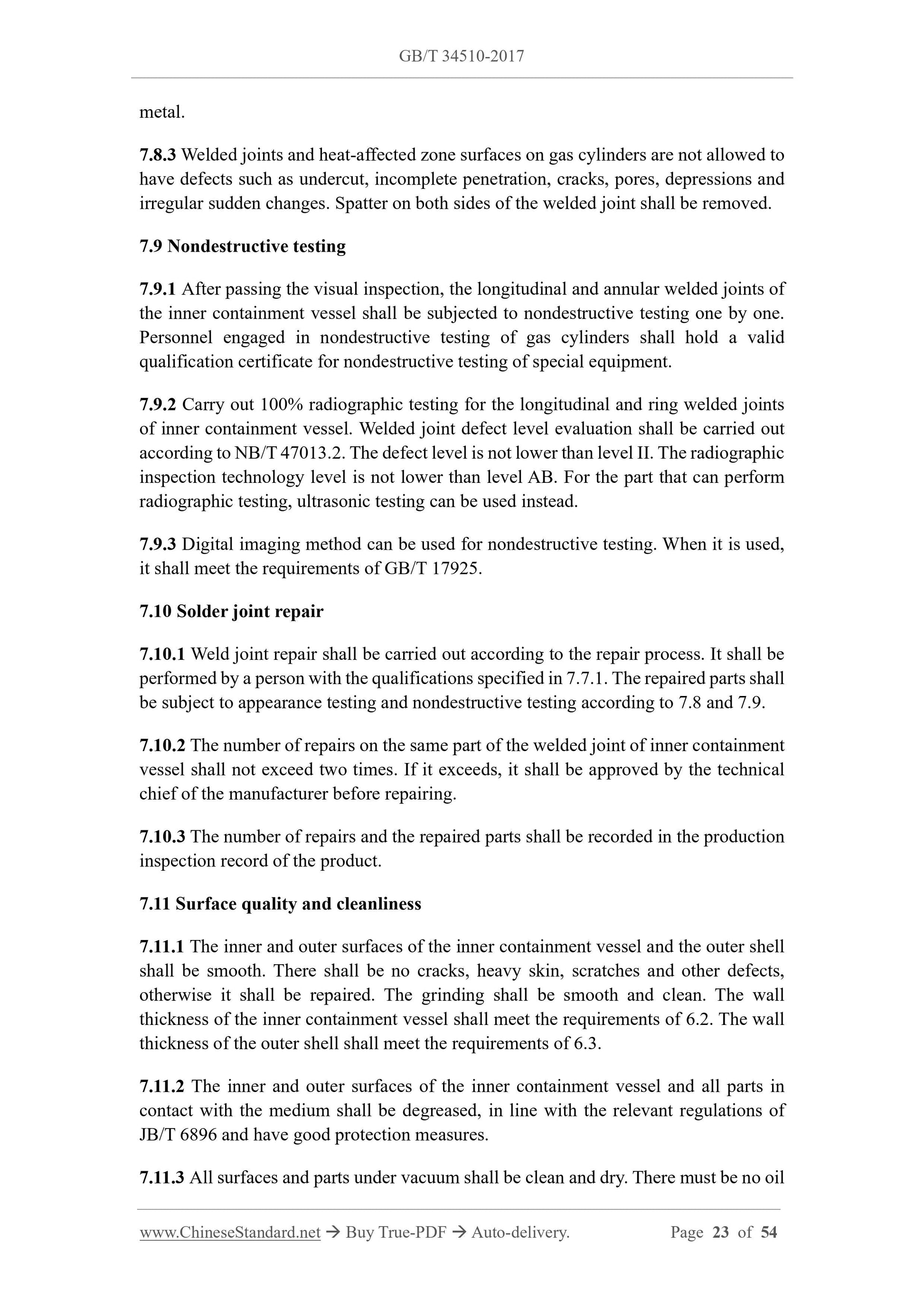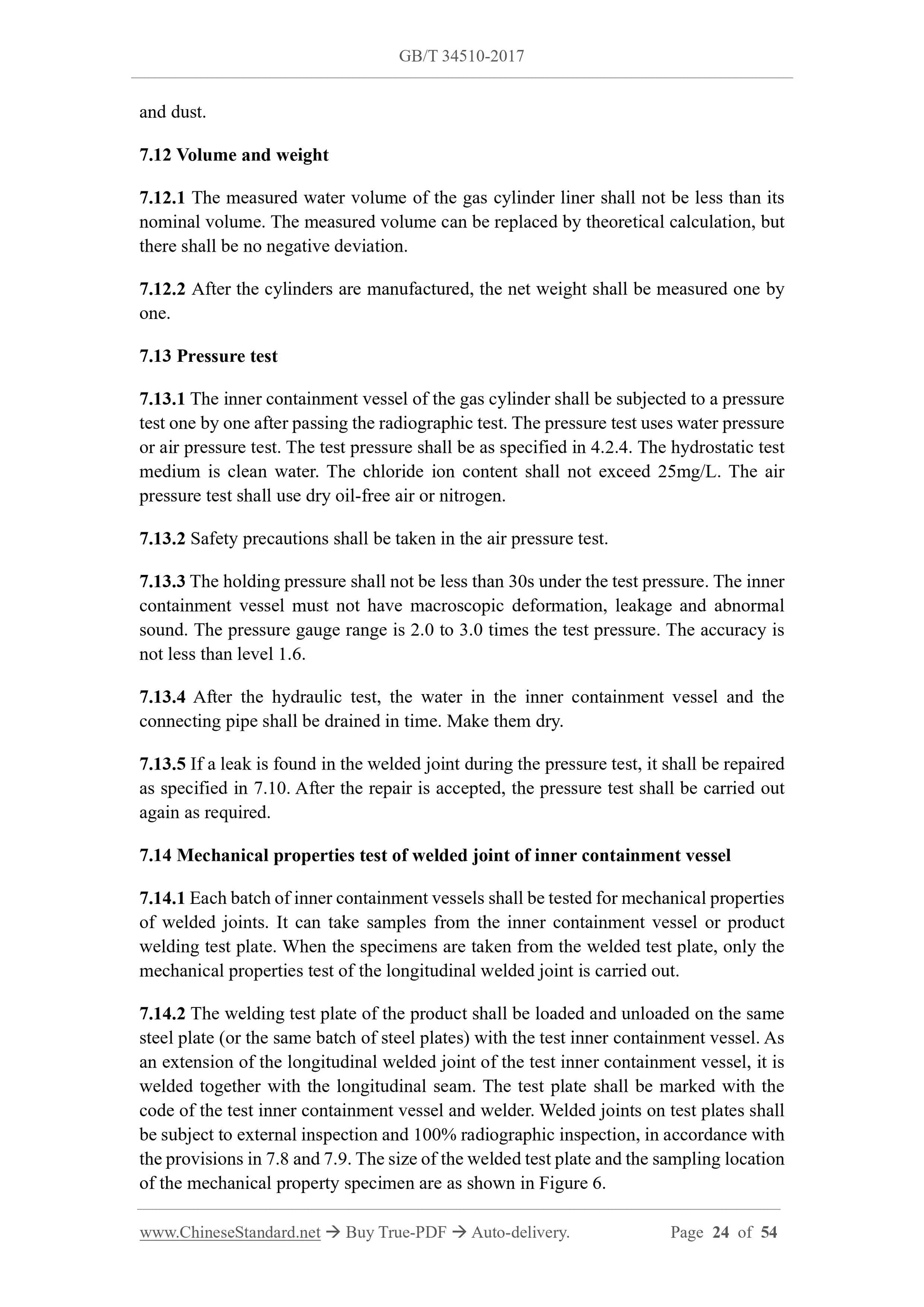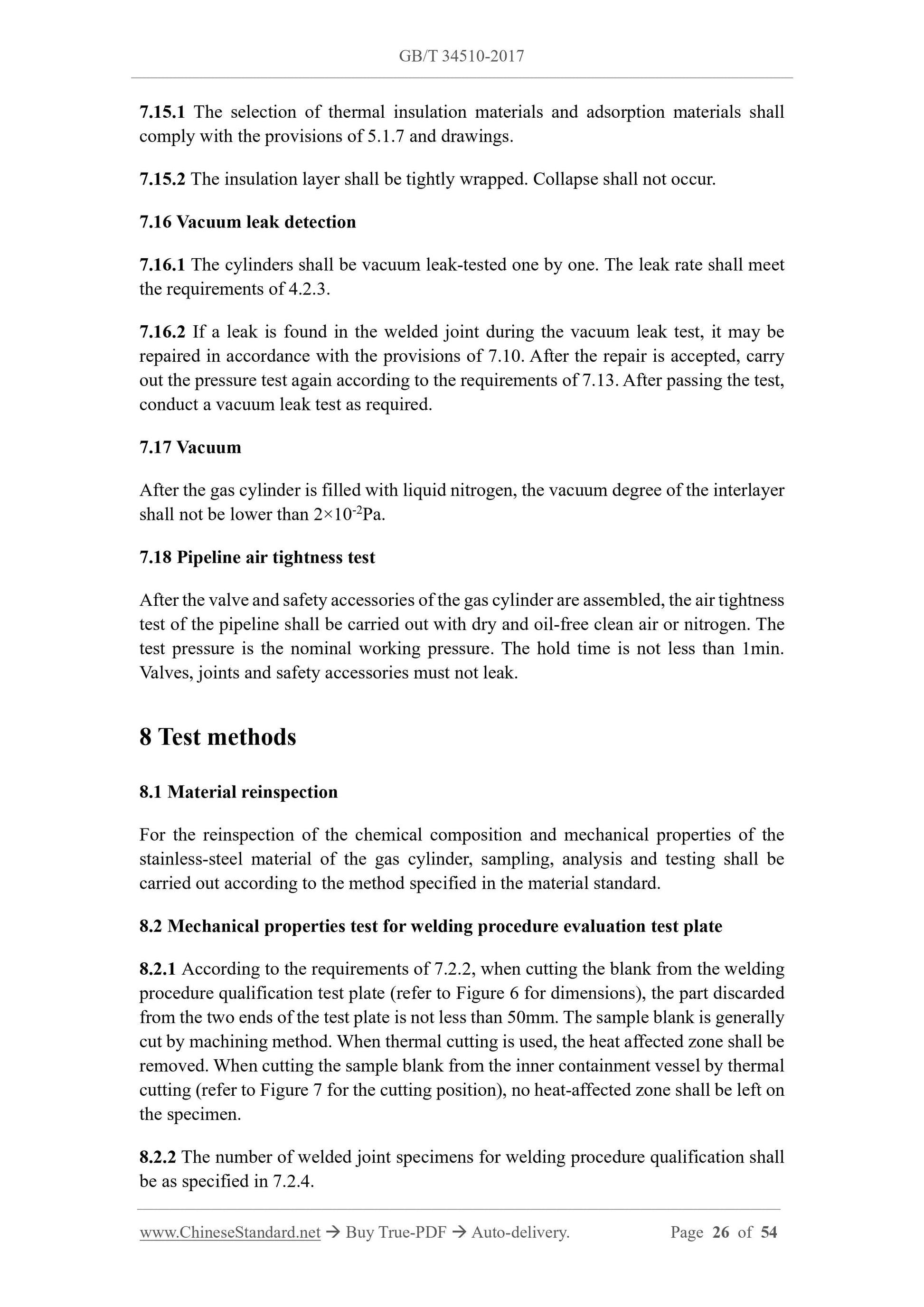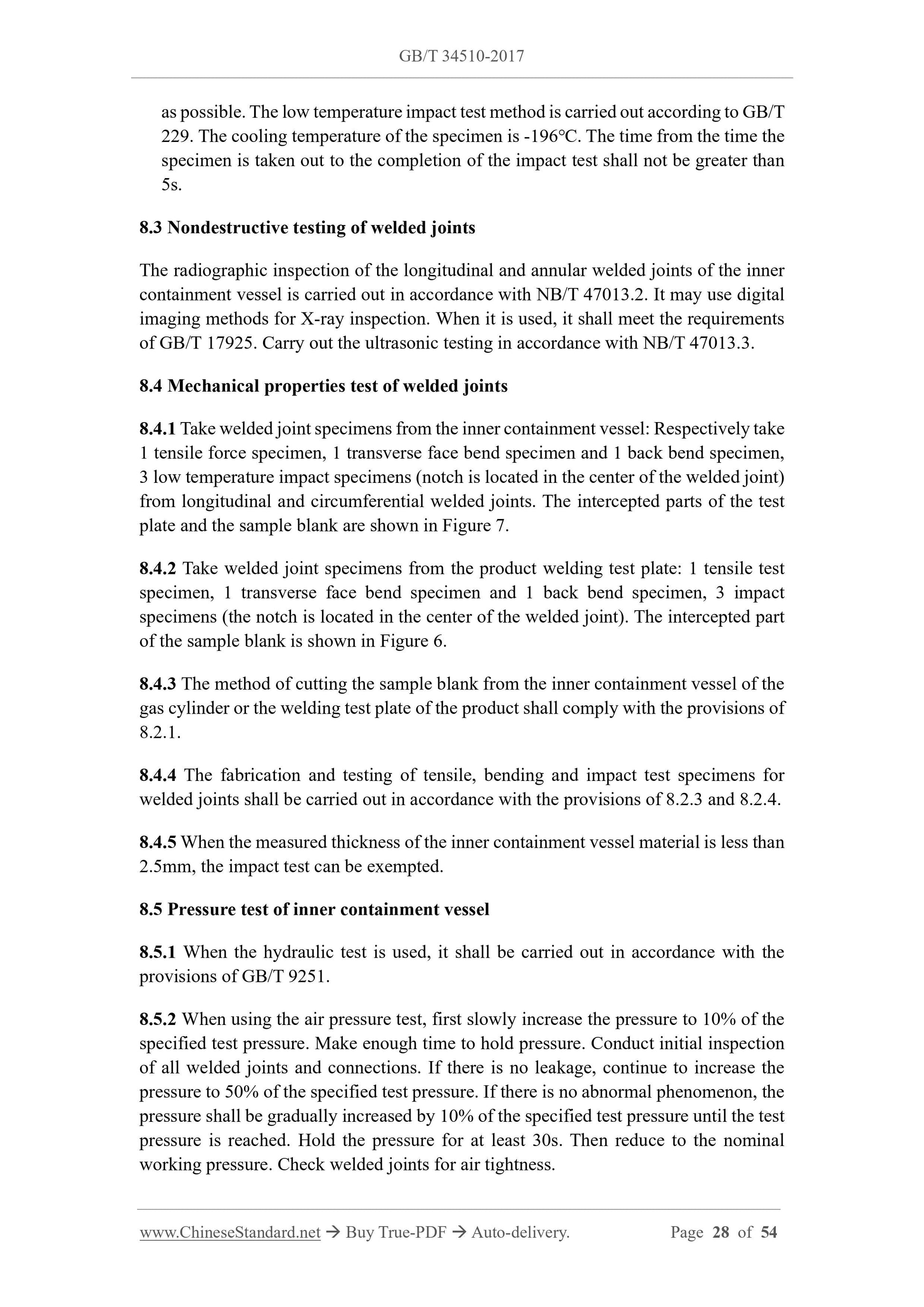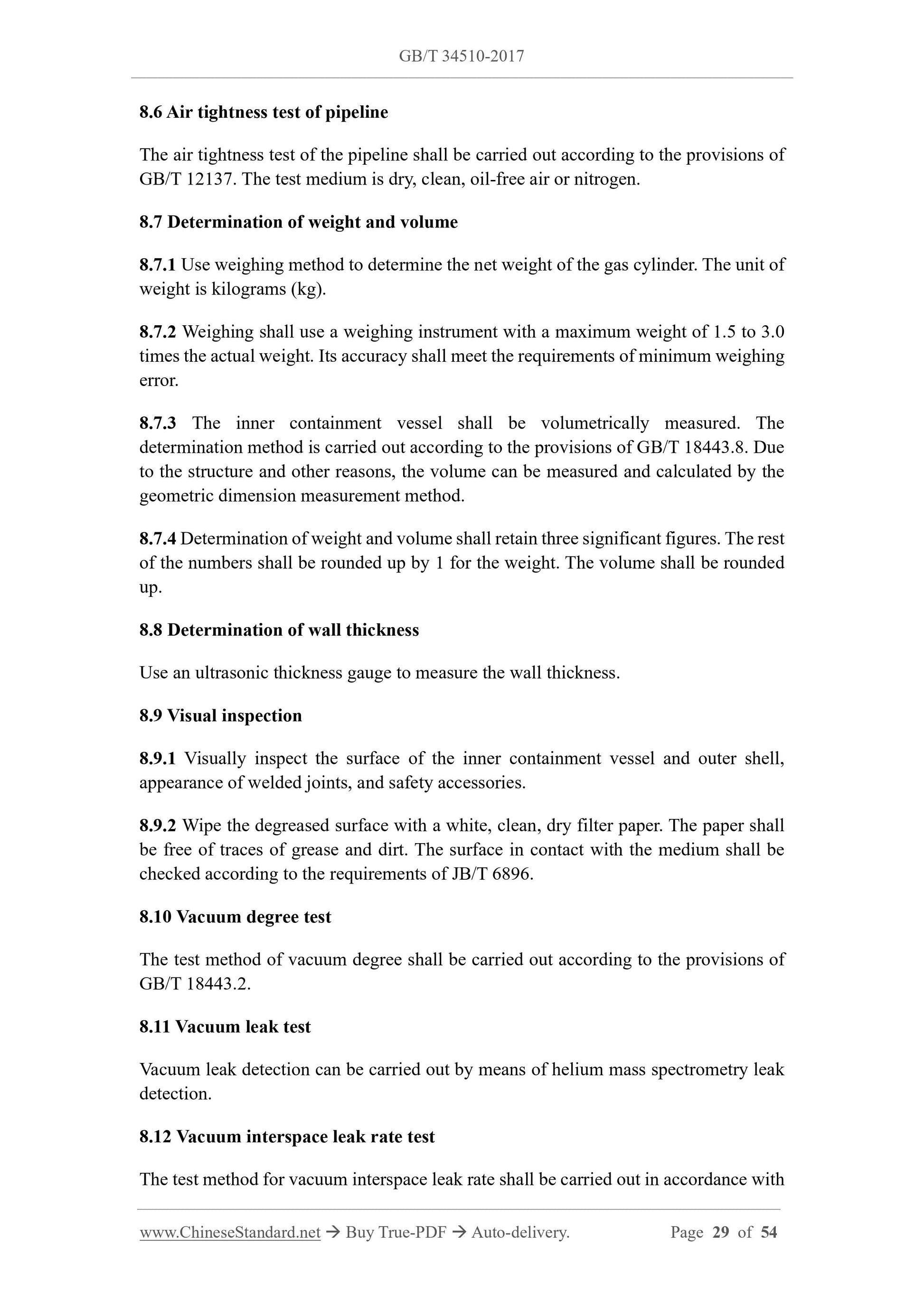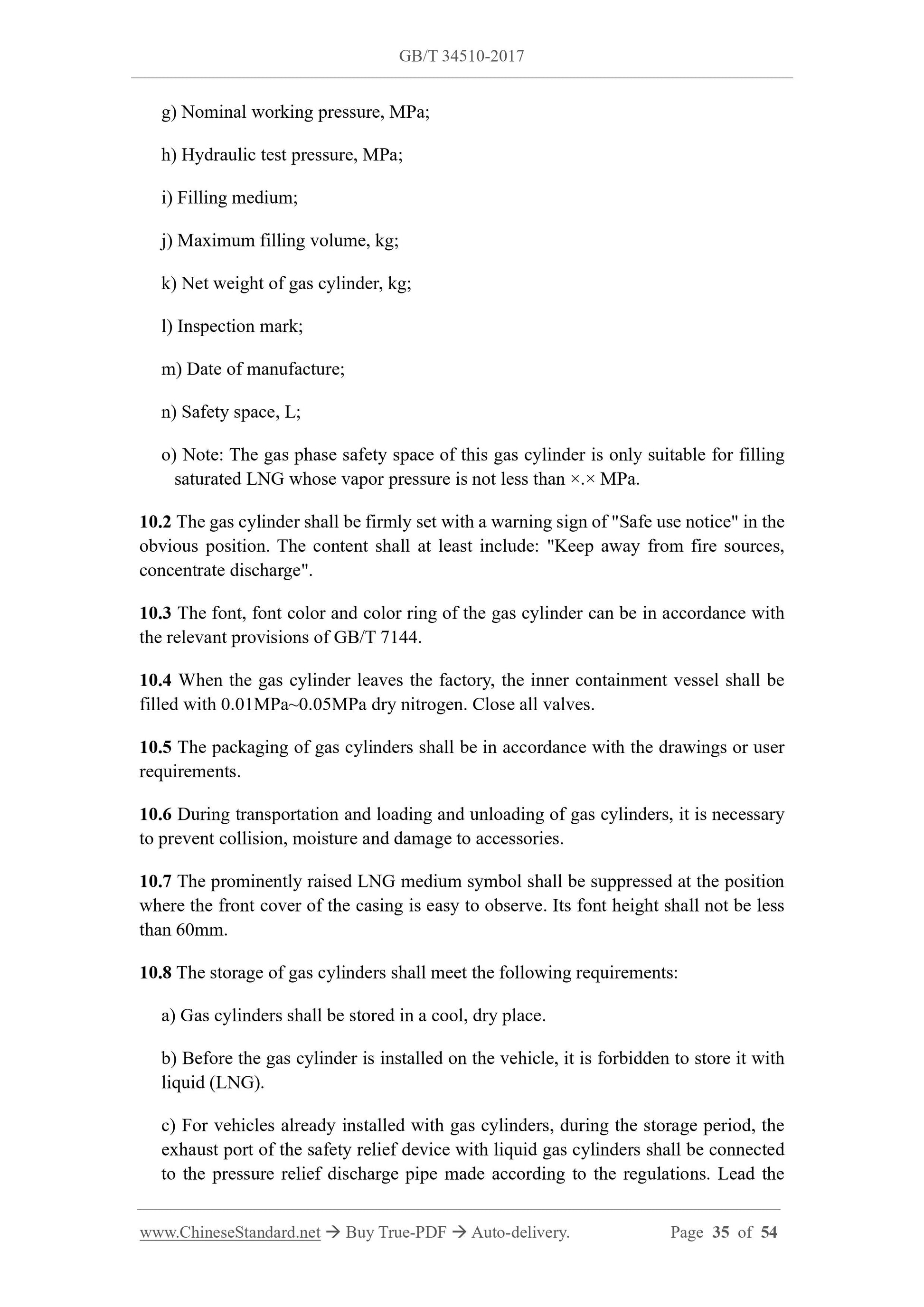1
/
of
12
www.ChineseStandard.us -- Field Test Asia Pte. Ltd.
GB/T 34510-2017 English PDF (GB/T34510-2017)
GB/T 34510-2017 English PDF (GB/T34510-2017)
Regular price
$560.00
Regular price
Sale price
$560.00
Unit price
/
per
Shipping calculated at checkout.
Couldn't load pickup availability
GB/T 34510-2017: Liquefied natural gas cylinders for vehicles
Delivery: 9 seconds. Download (and Email) true-PDF + Invoice.Get Quotation: Click GB/T 34510-2017 (Self-service in 1-minute)
Newer / historical versions: GB/T 34510-2017
Preview True-PDF
Scope
This Standard specifies the terms and definitions, symbols, types, basic parameters,materials, design, manufacture, test methods, inspection rules, marks, packaging,
transportation, storage, product qualification certificates, product instruction manuals,
batch inspection quality certificates and usage regulations for liquefied natural gas
(LNG) cylinders for vehicles (hereinafter referred to as the cylinders).
This Standard is applicable to the insulated cylinders that are used under normal
ambient temperature (-40℃~60℃), that the storage medium is LNG, the design
temperature is not higher than -196℃, the nominal volume is 150L~500L, and the
nominal working pressure is 0.8MPa~3.5MPa, that are used for refillable welding for
automotive fuel tanks.
Basic Data
| Standard ID | GB/T 34510-2017 (GB/T34510-2017) |
| Description (Translated English) | Liquefied natural gas cylinders for vehicles |
| Sector / Industry | National Standard (Recommended) |
| Classification of Chinese Standard | J74 |
| Classification of International Standard | 23.020.30 |
| Word Count Estimation | 38,316 |
| Date of Issue | 2017-10-14 |
| Date of Implementation | 2018-05-01 |
| Issuing agency(ies) | General Administration of Quality Supervision, Inspection and Quarantine of the People's Republic of China, Standardization Administration of the People's Republic of China |
Share
